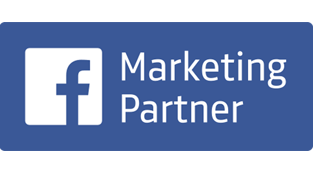Why Traditional Marketing Isn't Enough: Navigating The New Age of Outreach
From TV commercials to billboard advertisements, traditional marketing has long been the foundation of business promotion strategies. It used to be that prime-time TV spots or full-page newspaper ads were the hallmark of a successful campaign. Yet, as the digital era has unfurled, the limitations of traditional marketing have become more pronounced. Let’s delve into the reasons why traditional marketing alone no longer cuts the mustard and why businesses need to expand their horizons.

Evolving Consumer Behavior
Today’s consumers aren’t just sitting in front of televisions or flipping through newspapers. They’re online, browsing through products on e-commerce sites, reading reviews, engaging on social media, or streaming their favorite shows. They are less likely to be swayed by a radio jingle and more likely to be influenced by an online review or a recommendation on a social platform.
2. Limited Engagement
Traditional marketing is predominantly one-way communication. Businesses send out their message, and consumers receive it. There’s little room for real-time interaction, feedback, or engagement. In contrast, digital marketing platforms like social media allow for two-way communication, fostering engagement and building relationships.
3. High Costs with Uncertain ROI
Running a series of TV commercials or taking out newspaper ads can be expensive. While these strategies can undoubtedly yield results, their return on investment (ROI) is often hard to track precisely. Without concrete metrics, businesses are shooting in the dark, hoping their messages stick.
4. Lack of Personalization
One of the biggest advantages of digital marketing is the ability to tailor messages to specific audience segments or even individual users. Traditional marketing, with its broad strokes approach, lacks this finesse. It’s a one-size-fits-all method in an age of customization.
5. Rapidly Changing Media Landscape
Print media readership has been on a decline, and more TV viewers are switching to ad-free streaming platforms. Relying solely on these mediums to get the word out is a strategy fraught with risk.
6. The Rise of Ad Blindness
Repeated exposure to the same types of ads makes consumers immune to them. This phenomenon, known as ‘ad blindness,’ means that many consumers subconsciously ignore banner-like information, making many traditional advertising efforts futile.
7. Limited Reach in a Globalized World
The internet has globalized commerce like never before. A small boutique in Paris can sell its products to someone in Tokyo. Traditional marketing, bound by geographical constraints, cannot tap into this global potential.
8. Not Environmentally Friendly
As businesses move towards sustainable operations, traditional marketing methods, especially print media, are often criticized for their environmental impact. Digital marketing provides a greener alternative.
The Path Forward
This isn’t to say that businesses should ditch traditional marketing entirely . These methods still have value, especially for certain demographics and regional outreach. However, a blended approach, integrating traditional and digital methods, is the key to comprehensive outreach.
Businesses can leverage data analytics from digital campaigns to refine their traditional marketing strategies, ensuring that each penny spent is optimized for maximum impact. Similarly, traditional campaigns can direct consumers to digital platforms, creating a holistic brand experience.
Law Pro Nation’s Perspective
At Law Pro Nation, we’ve witnessed the transformative power of integrating digital strategies into traditional legal marketing. For instance, while a billboard can inform someone about a law firm, an accompanying social media campaign can provide them with client testimonials, case studies, and interactive Q&A sessions, building trust and credibility.
In conclusion, while traditional marketing has its merits, relying solely on it in today’s dynamic and digital-first world is a recipe for limited success. Businesses must adapt, innovate, and integrate to capture the attention and loyalty of modern consumers.



